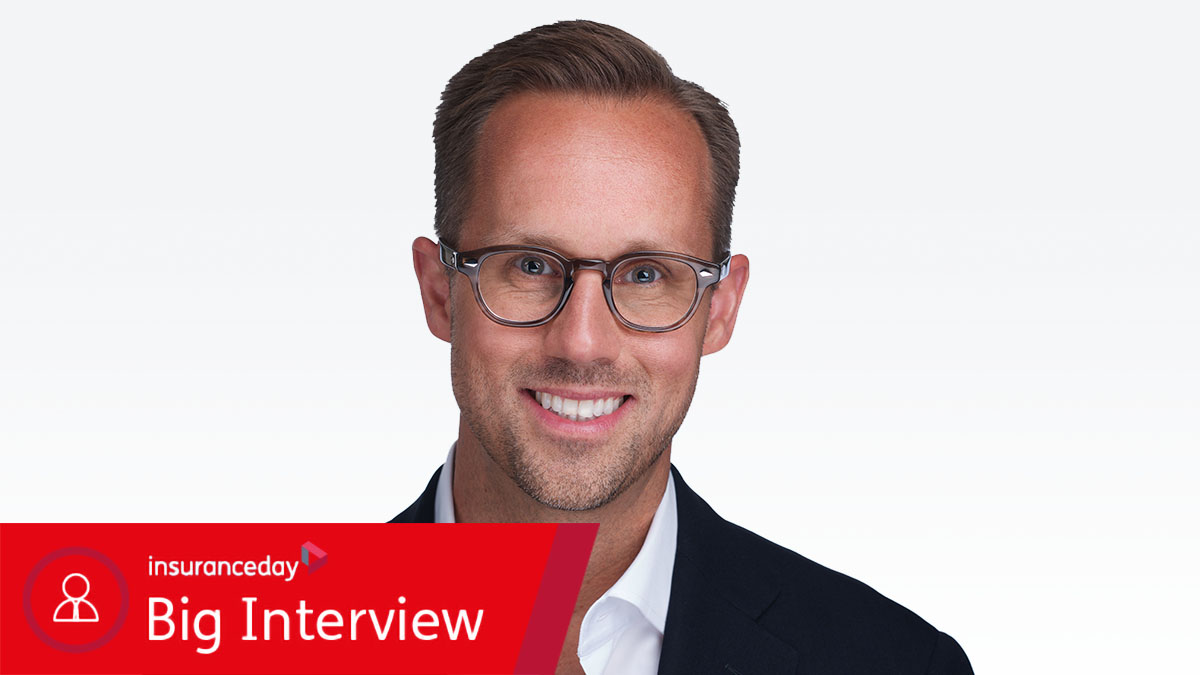E&S is more than the market of last resort: AmTrust’s Bublitz
‘Companies need to move quickly with the nuanced differences they need in their insurance, which is driving the need for coverage that moves as fast as the world does,’ the head of E&S at global insurer AmTrust says
AmTrust’s head of excess and surplus, Erich Bublitz, describes the latest stage in the evolution of ‘hard-to-place’ business and what the Vesttoo scandal means for the January 1 renewals
Excess and surplus (E&S) has traditionally been seen as the place for business carriers do not want to cover, but now there is greater appreciation the benefits of E&S go far beyond convenience, according to Erich Bublitz, head of E&S at global specialty insurer AmTrust.
In an interview with Insurance Day, Bublitz describes the three main cases where E&S has been the natural choice: hard to place, hard to rate or hard to profit.
Hard to place means the absence of a standard market rating plan, normally because of a lack of data, for anything that is unique, with an extreme example being a space shuttle, Bublitz says. Hard to rate applies when an individual account has a characteristic, such as numerous claims, that makes it undesirable for the standard market. Hard to profit is where the results of a class or line of business deteriorate, as is happening with Florida and California property.
The E&S market is evolving beyond those three cases, however, and is growing quickly.
“E&S used not to be well understood and so it was truly the market of last resort or the market where only the largest carriers went to. In the past five to 10 years, however, the value proposition of E&S has been accepted as a big positive for the industry,” Bublitz says.
Speed is one of the main attractions.
Bublitz says: “Companies need to move quickly with the nuanced differences they need in their insurance, which is driving the need for coverage that moves as fast as the world does, while admitted coverage is very much not moving at the speed of the world today. E&S is no longer simply about getting a risk off their desk; it’s about meeting the specific asks of their insureds as quickly as possible.”
That evolution has produced double-digit growth in the E&S market in recent years, reaching 20% last year.
“I don’t see that growth slowing down and we’ll continue to see more classes of business that maybe historically were not in E&S continuing to move there,” Bublitz says.
The implication of using E&S is not always about paying more, he stresses, but can mean narrower coverage.
He continues: “Everything is insurable and it’s just a matter of whether you can get enough money for it. These days, E&S is generally considered to be specialty coverage but if you need the coverage badly enough and you’re willing to work with the E&S market then there’ll be a price point for it and a policy structure you can get for it. You may not love both the terms and the price, but E&S will find a way. There are a lot of very creative underwriters in E&S and they’re willing to find solutions.”
Defined role
When Bublitz took on the role of running AmTrust’s E&S business in September 2021, he found a division that was “fairly robust” thanks to a strong team of underwriters. As a relatively new market for AmTrust, however, there was a need to define what it would and would not offer in E&S.
“We had grown fast in E&S but hadn’t done a good job of defining what we do and so, when I took the role, we worked on defining our identity. That’s about being visible at the local level in the broker community and at the global level at industry events. The next step was telling the wholesale brokers exactly what we want to write and what we don’t want to write. If you don’t do that then they don’t send you business because they’re not going to put effort into finding out you don’t want it.”
“Everything is insurable and it’s just a matter of whether you can get enough money for it. These days, E&S is generally considered to be specialty coverage but if you need the coverage badly enough and you’re willing to work with the E&S market then there’ll be a price point for it and a policy structure you can get for it”
Erich Bublitz
AmTrust
Bublitz then “tailored” AmTrust’s E&S business into five regions, to enable a local “interface” with its brokers and insureds, because “a risk in Florda is not the same as a risk in Illinois”.
“The objective part of success is the premium and income, but the subjective part is the feedback we get, which is that the brokers and our partners are comfortable with what we provide. It’s that subjective part where we measure ourselves more and we have seen our work on our identity is making a significant difference,” he says.
Main Street
AmTrust’s E&S division mirrors the focus of its parent company, as a “Main Street” underwriter.
Bublitz continues: “We focus on the companies you see when you walk down the street, the mom-and-pop shops, the local businesses. We make sure what we do in the E&S space matches up with the AmTrust corporate mentality, which means we don’t write the large habitational schedules with hundreds of locations. We’ve told the market that’s not for us, that we’re only interested in small to mid-size businesses.”
In short, this is a “national underwriting appetite” based on a regional model to manage local nuances.
“We are a highly responsive, nimble underwriter for small to mid-size businesses,” he says, with the simple formula of “doing a really good job of calling people back”.
Bublitz says: “When a business moves into the E&S space, frequently there has been a failed attempt to put it into the standard market and, by this point, the insured really needs coverage. These days, with so much online, everybody expects an instant result and so the communication between broker and underwriter must move quickly. Instead of going back and forth with this, the best way is just to call.”
New technology, then, should be about enabling underwriters to be more efficient and not about replacing the underwriter, he adds.
Lack of new talent
The move from a centrally controlled E&S business to its new regionalised approach was completed within Bublitz’s first year in the job. The second milestone in that period was establishing a home office underwriting function for E&S, “to help move rates and forms at a faster pace”. The third and most difficult milestone was to enlarge its team.
“Finding quality underwriting talent is an industry-wide issue and it is even more difficult to do in the fast-growing E&S sector. It was important to us that we got the right people and not just people,” he says.
That process took two years to create a team of 60 underwriters.
“The E&S sector is facing a shrinking talent pool, with many of its underwriters approaching retirement age, meaning a lot of the knowledge will be leaving in the next five to 10 years. I’m not sure the industry has done a good job of backfilling that expertise because we still need to get people excited about joining E&S, both straight out of college and at a point later in their career.”
That should mean trying to attract underwriters from the standard market into E&S, he continues.
“AmTrust is a global underwriter, which gives us a pool of talent we can encourage to come over to E&S, but it’s also about continuous education so we not only train new people but also advance people in their careers with us as well. That means investing in people when they’re already on board.”
Other concerns
The insurance sector is also concerned about inflation, both fiscal and social.
“When you get into longer-tail business, such as casualty, then inflation becomes a really big deal,” Bublitz says, “so I would say, short of the people aspect, inflation is the biggest issue right now and how we address that as an industry as a whole.”
Alongside a shrinking talent pool and inflation, the next biggest risk to the E&S business is growing too fast.
“The best way to protect reputation is to become more efficient,” Bublitz says. “Otherwise, we’ll grow so fast we can no longer meet our insureds’ needs, not underwrite properly and then results start to deteriorate.”
AmTrust is a “very technology-forward company”, he continues.
“Now we have the E&S platform, people, processes and technologies in place and it’s operating really well, we have the opportunity to start bringing in more lines of business than we’ve written in the past. Operating a small division within a big global company means we can be nimble and rely on the resources a large company provides.”
A new line AmTrust is considering for its E&S business is product liability.
“It’s a fast-growing area and the accounts tend to be smaller, so it must be an efficient business. That’s a great opportunity for us right now because we’ve become more efficient and effective at placing smaller pieces of business. And we have our binding platform as well, which means we can write more small business thanks to the significant investment we’ve made in technology,” Bublitz says.
Market considerations
E&S is so broad “hard market” does not apply as a blanket term.
“There are pockets that are currently hard. For example, cyber, is a pretty hard market and while directors’ and officers’ is still adequate, it’s softer than it was a couple of years ago. E&S covers a wide spectrum of hard and soft lines. More importantly and as a rule, E&S underwriting has stayed disciplined,” Bublitz says.
A more pressing issue for E&S is how reinsurers plan to distribute their capital at the next renewal on January 1.
Bublitz says: “There’s less capacity in reinsurance than there has been for several years, but all the property losses that have come up are going to determine decisions among reinsurers at 1/1 because those losses have hurt their capital.
“Reinsurers drive a lot of E&S and there’s definitely an indication they are going to be tighter in their capital deployment, they’ll be more selective with the companies they deploy capital to.”
That cautiousness is even more acute given the attempts to bring in capital by “non-traditional means”, he says.
Referring to Vesttoo, the ill-fated insurance-linked securities insurtech platform, Bublitz says alternative capital is becoming “less appealing” to the market. That means a return to greater dependence on the “traditional” reinsurance market.
“In our conversations with reinsurers, they’ve already indicated they’re going to be more diligent not just about lines of business but about who they’re distributing their capital to. They want to make sure they’re working with partners who are already generating the types of business they want to have on their books for a long period of time.”
The Vesttoo scandal has been a “significant black swan event” in the E&S space, he continues.
“Some of the companies that were connected with Vesttoo have been desperately trying to replace their coverage in the past couple of months and that really should be a warning flag.
“The problem is a lot of companies are reinsurance-dependent and they’re not carrying a lot of risk on their own books because there’s not enough capital these days to do that. The question then becomes, are the fronting companies going to find enough capital?”
There will be a response from rating agencies to separate the stronger managing general agencies (MGAs) from the weaker ones, he continues.
“I can’t imagine AM Best isn’t taking a really hard look at the fronting companies to make sure their management structure, the capital behind them and their potential for longevity is all there. Whether that shrinks the value of fronting companies, I don’t know, but it’s certainly going to slow them down.”
He continues: “That will probably hurt capacity a bit and it may strengthen rate as placing risk becomes harder. It’s probably good for the E&S industry in the long term, because it will force discipline out there. And while we have been fairly disciplined, it will ensure we continue to be so.”
The outcome may be to push more business away from E&S companies with fronting scenarios and back to a traditional carrier model, he says.
For the long haul
The solution boils down to experience over youth.
“E&S is such a desirable space and covers all lines that fronting companies have provided a lot of people with the ability to start an MGA. We have seen a couple of start-up MGAs that are fronted and there has been some top-line pressure on them because they don’t have a loss history,” Bublitz says.
“That’s the biggest concern – fronting companies in need of premium growth, willing to sacrifice underwriting profitability to get top-line growth. If that starts happening too broadly, that would create rate issues for the E&S space. We certainly are being very careful about who our underlying carriers are for writing excess.”
Even before the negative press about Vesttoo, the signs were there MGAs and fronting companies were growing too fast, he adds.
“That growth is obviously not sustainable. Some will survive, some will not. We had already become concerned about how fast these companies were growing and Vesttoo just made an obvious situation even more obvious.”
There have been insurtechs entering the E&S space that claim to have a model or formula that can differentiate insurance very quickly. The problem is, these formulas have not been tested.
“When you’re looking at a business for 10 years of tail, it’s going to take a long time to find out whether that model was correct or not,” Bublitz says.
As part of a global insurance company, AmTrust E&S provides long-term stability.
“As an $8bn insurance company, we're going to be there 10 years down the road, so that ‘promise to pay’ is also a promise of who is going to pay and so we’re encouraging people to make sure they’re purchasing coverage from a company they feel comfortable with, not just today but in the future.”



